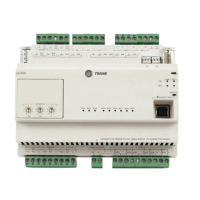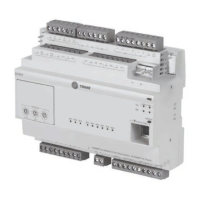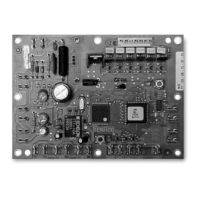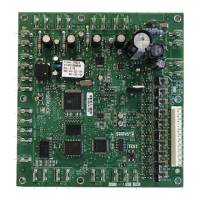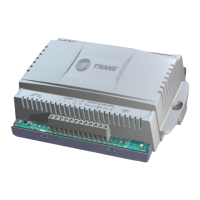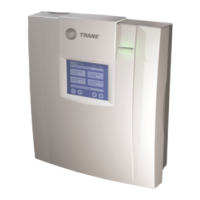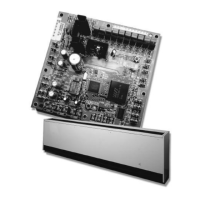Chapter 3 Input and Outputs
24 CNT-SVX05B-EN
IN7: Low-temperature detection or coil defrost
Binary input IN7 can be configured either as a low-temperature detection
input or a coil defrost input.
Low-temperature detection
When configured as a low-temperature detection input, IN7 protects the
coils of hydronic units. A low-temperature-detection device (freezestat)
connected to the input detects the low temperature. The Tracer AH540/
541 controller can protect the coil using one binary input. When the con-
troller detects the low-temperature-detection signal, the controller gener-
ates a Low Temp Detect diagnostic, which disables the fan, opens all unit
water or steam valves, and closes the outdoor air damper (when present).
The low-temperature detection device can be automatically or manually
reset. However, you must manually reset the Low Temperature Detect
diagnostic to clear the diagnostic and restart the unit. See “Resetting
diagnostics” on page 89 for instructions on clearing controller diagnostics.
Coil defrost
Binary input IN7 can be configured as a coil defrost input in direct expan-
sion (DX) cooling applications when a binary device is used to detect low
evaporator refrigerant temperatures. When the DX coil refrigerant tem-
perature drops below the detecting device threshold and the device out-
put changes states, the Tracer AH540/541 controller disables all DX
cooling until the frost condition is cleared. DX cooling operation automat-
ically resumes when the binary input is normal.
For more information regarding coil defrost operation, see “Coil defrost
binary input” on page 66.
Table 8. Low-temperature detection controller operation
Diagnostic
Fan
operation
Valve
operation
Face-and-
bypass
damper
Outdoor air
damper
Low-temperature
detection
Off
Open
1
Face Closed
1 When hydronic or steam is the source of heat, the heat output is cycled open and
closed when the controller is shut down by a Low Temp Detect diagnostic. See “Freeze
avoidance” on page 70 for further details.
Note:
Binary input IN12 can also be configured as a coil defrost input.
Table 9. Coil defrost binary input configuration
Configuration Contact closed Contact open
Not used Normal Normal
Normally closed Normal DX cooling disabled
Normally open DX cooling disabled Normal
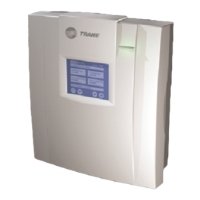
